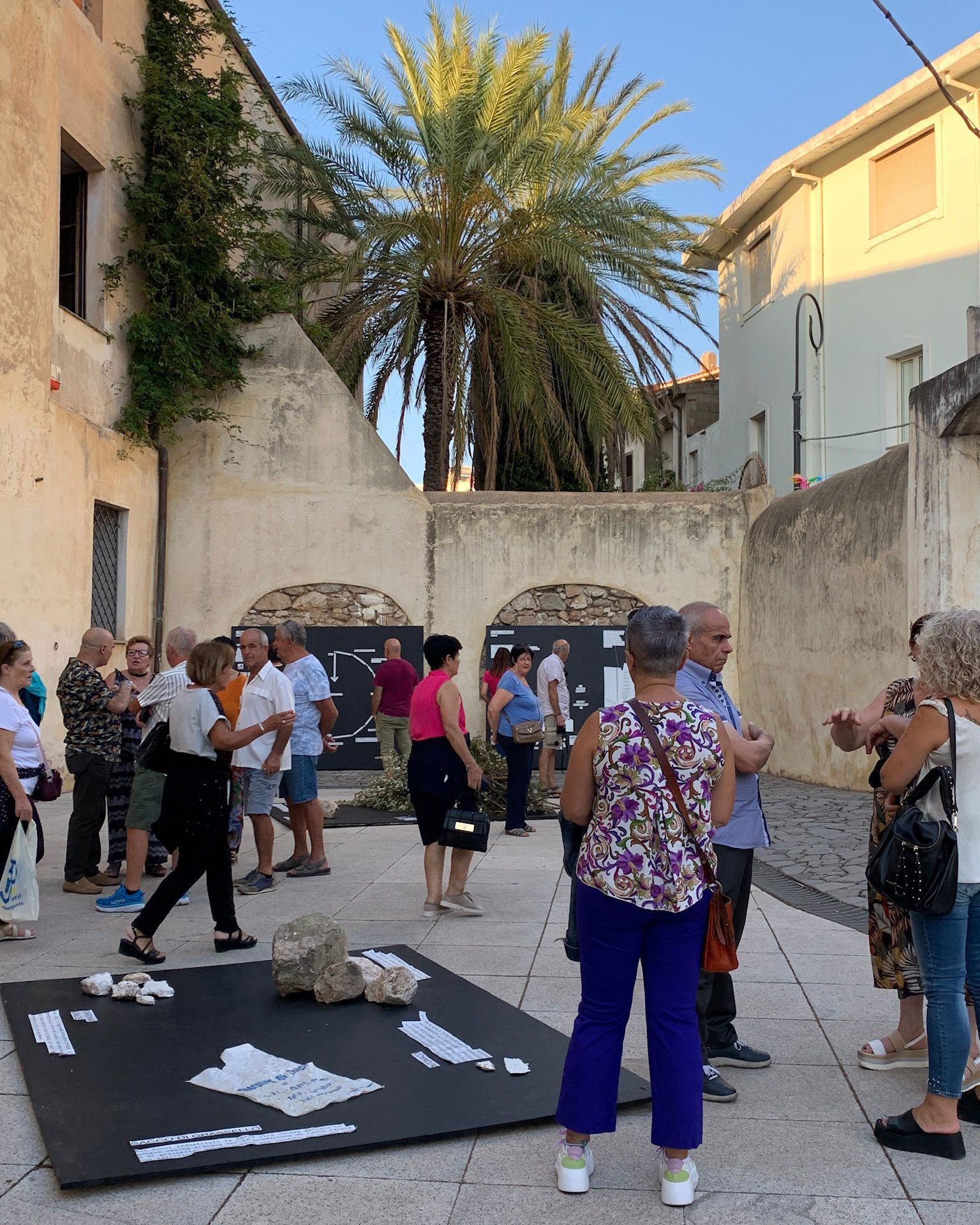Dae predas nostras
06 November 2023 — 2 minutes read

The exhibition "Dae predas nostras", as part of the research and experimentation project InnestiUrbani / ReStart, offers a testimony of the history and potential of the territory of Oliena, in Sardegna, to stimulate the initiation of new projects, research, and economies through participatory co/design models.
In September 2023, in Oliena, located in the province of Nuoro, took place the exhibition Dae predas nostras — Narrare Oliena e il suo territorio. Storie di terra, cielo e acqua, curated by Barbara Camocini, Laura Daglio, Giuseppe Boi, in collaboration with Giulia Gerosa.
The exhibition originates from the research and experimentation work InnestiUrbani / ReStart by professors, students, and researchers from the Departments of Design and Architecture and Construction Engineering of the Politecnico di Milano, in collaboration with other regional and international Universities. They address the emerging issue of depopulation and abandonment of small urban centers in Italy and Europe, through the study of landscape features and the material and immaterial heritage of local culture.
The project has evolved since 2016 through round table discussions, various design workshops, the organization of exhibitions and seminars held in the "cortes", enclosed courtyards located in the historical nucleus, once the core of social and productive activities of the inhabited center. These courtyards constitute an important historical, artistic and social heritage that needs to be safeguarded and enhanced. Every year, the results of the work have been presented at the event "Cortes Apertas" which takes place in the autumn in the main villages in Barbagia.
The activity addresses the citizens with the aim of discussing the theme of urban regeneration of the core center, its potential models, and especially the opportunities. Over the years, the focus increasingly shifted towards the search for inclusive models that revitalize the courtyards and also involve the territory of Oliena. The central role lies in engaging the local population in workshops and participative co/design initiatives, initiating a process of awareness regarding the issue of urban decline and offering a space for experimentation and collaboration, creating a shared creative space between designers and inhabitants introducing a cross-sectional value of social innovation.

Dae predas nostras, held at the Ex Collegio dei Gesuiti, aims to offer a testimony on a larger scale than that of the village, enhancing the history and potential of the territory through the exploration of the local landscape composed of the "stones" of Supramonte, the karst phenomenon characterized by its caves, and the ruins of the ovens along its slopes, used for baking limestone stones from which lime is produced, testifying to a fundamental aspect of the socio-economic history of Oliena and its inhabitants.
The experimental intent of the exhibition was twofold: on one hand, to involve the local population in the design and implementation process through participatory co/design models that awaken a common sense of belonging and sharing of problems and goals and, on the other hand, to verify the re-actualization and reinterpretation of urban places and the surrounding territory to trigger new ways of reclaiming space.

Dae predas nostras was not just an exhibition but a space for work, communication, and interaction to enrich the community's imagination, generating debate and vitality.
Scientific Coordination and Set-up:
Barbara Camocini
Laura Daglio
Giuseppe Boi
With the contribution of:
Angelino Congiu, Claudia Congiu, Francesco Cucca, Pierluigi Fadda, Sebastiano Ghisu, Giovanni Pinna
Interior and Spatial Design:
Lucilla Grossi
Elisa Longoni
Silvia Zancan
Organization:
Oliena Centro
Project partners:
Comune di Oliena
GAL Barbagia
Acknowledgments:
Nina Catte, Antonio Congiu, Paolo Congiu, Salvatore Congiu, Fabio Coronas, Pasquina Corrias, Gianni Cucca, Gianfranco Deiana, Graziano Lovicu, Giuseppe Massaiu, Elena Pinna, Pietro Pulloni